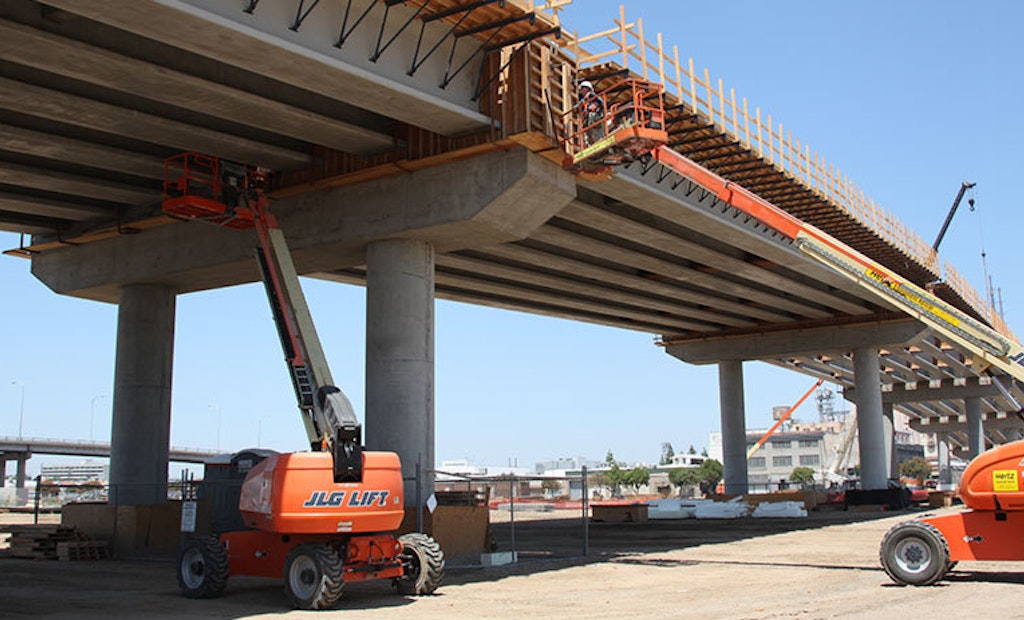Interested in Rehab/Relining?
Get Rehab/Relining articles, news and videos right in your inbox! Sign up now.
Rehab/Relining + Get AlertsIn the first part of this series, I mentioned five mega megaprojects with budgets in the $10 billion to $20 billion range. Massive projects, indeed — but not the most massive. Without getting into the multi-project scale of the U.S. interstate highway system or an economic revitalization strategy, the following are five of the largest public works mega megaprojects currently underway.

RIYADH METRO: $23B
This is a start-from-scratch metro project. Six lines, 85 stations (50 underground and 31 elevated) and seven depots will be ready by 2019. Current usage of public transportation in the Saudi capital is only 2 percent. Upon completion of Riyadh Metro, the usage goal will rise to 20 percent. This project is being conducted in parallel with the development of a 24-line bus system and an expanded road network to address gridlock in the rapidly growing city.
SOUTH-NORTH WATER TRANSFER PROJECT: $62B
Water is life. Within China’s geographic borders, there is more water in the south than the north. That’s a problem for industrial population centers such as Beijing and Tianjin in the north. As early as the 1950s, Mao Zedong discussed the need for more water in the northern part of China. By building canals, tunnels and pumping stations to divert water from southern rivers such as the Yangtze, Han and Yellow to northern provinces, China is carrying out one of the most ambitious public works mega megaprojects ever. The Eastern Route began operating in 2013, the Central Route in 2014, and the Western Route is still in the early planning stages. Construction for the whole project is expected to last until 2050. While most sources claim the $62 billion expenditure, one pegs it closer to $79 billion.

CALIFORNIA HIGH-SPEED RAIL: $64B
Even with long-term funding still up in the air, construction on the California high-speed rail project has begun near Fresno. The ultimate goal is to connect cities from San Diego to Sacramento via a 220 mph train ride. Under the management of the California High-Speed Rail Authority, the project is the first of its kind in the United States. High-speed rail aims to be travel ready by 2025 and fully built out by 2029. The project is not without controversy from property owners subject to eminent domain and environmentalists. (Don’t confuse this project with Elon Musk’s Hyperloop One, which is still in the conceptual stages.)
JAPAN’S MAGLEV HIGH-SPEED RAIL: $85B
Chuo Shinkansen began construction in 2014. This mega megaproject uses magnetic levitation (maglev) technology, which allows the train to move without ever touching the ground. Maglev is much faster than traditional rail technology. When complete, it will shorten the Tokyo-to-Nagoya journey from an hour to 40 minutes and the Tokyo-to-Osaka journey from 145 minutes to 67 minutes. Completion of the entire project isn’t expected until 2045.
FUKUSHIMA CLEANUP: $189B
The 2011 earthquake and tsunami that triggered a nuclear meltdown at the Fukushima Daiichi nuclear plant also destroyed or damaged over 1 million buildings, almost 4,000 roads, 78 bridges and 29 railways. The $189 billion estimate also includes compensating victims, so this isn’t purely a public works mega megaproject. Decontamination and nuclear plant cleanup may take up to 40 years. For perspective, the final containment arch on the Chernobyl disaster is scheduled for completion in 2017, more than 31 years after the disaster. Both Fukushima and Chernobyl are rated 7 on the International Nuclear and Radiological Event Scale.
What did I miss? What’s brewing in big public works projects around the world? Let me know about any other $10 billion-plus mega megaprojects that are currently under way.
Wireless communication is important on all projects — large and small. Find out more at soneticscorp.com.






